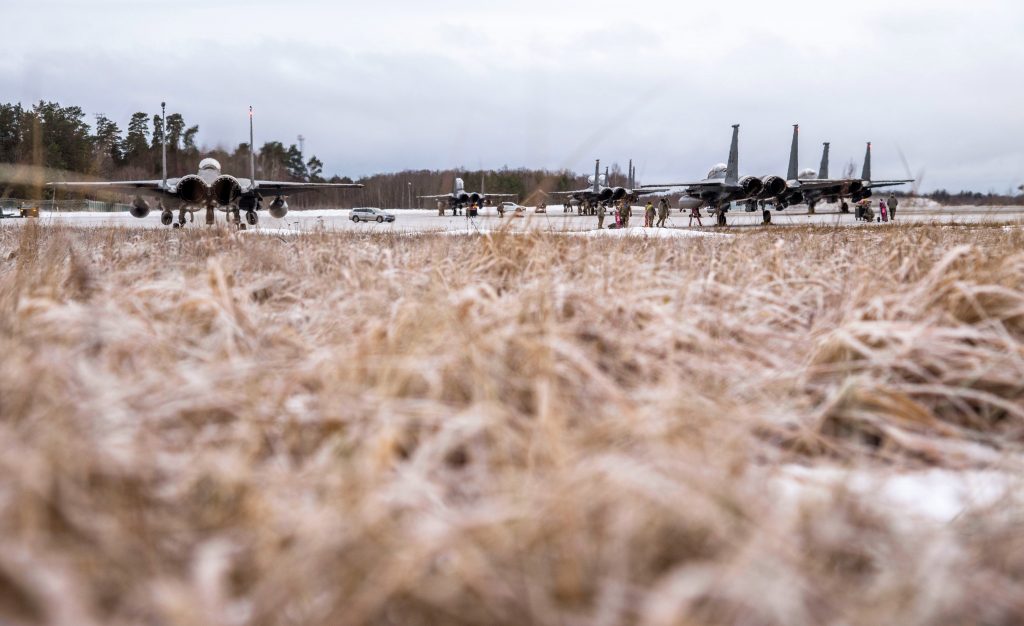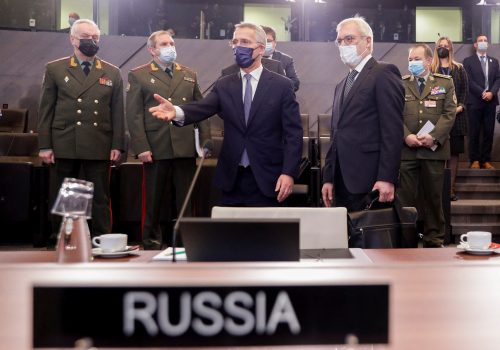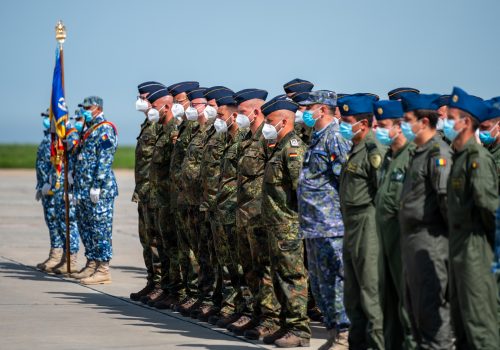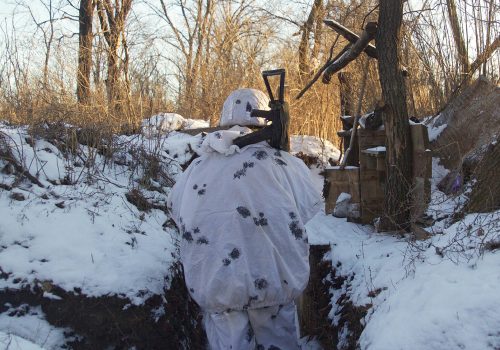The standoff over Ukraine has underscored a pressing need for NATO. Even though NATO leaders agreed to its new military strategy of defense and deterrence in 2019, given the events in Ukraine, that strategy appears dated.
Why?
First, Russia has shown it is prepared to use its military in anger and certainly as a threat. And it has modernized its conventional and nuclear forces. NATO has not begun a major modernization for either its conventional or nuclear forces. And the current strategy, at least the parts of the classified guidance that have been revealed in public, offers rhetoric and not substantial guidance on modernization.
Second, while NATO created centers of excellence to deal with specific aspects of hybrid war, the Alliance still has not produced a viable and comprehensive counter-gray area/hybrid-war strategy with corresponding capabilities. Russia calls these operations “active measures” that include cyber, propaganda, misinformation, disinformation, and information operations to erode the will and cohesion of NATO.
Third, while advanced technology has generated revolutionary advances in military capability, conversely, it also has created greater vulnerabilities—particularly in command-and-control and logistics. Effectively targeting these vulnerabilities will disrupt any offensive.
In the 1940 Battle for France, had British and French forces sustained air and long-range artillery attacks on the many miles of German convoys crowding major roads driving west, one of the greatest traffic jams in history would have resulted. That did not happen.
Fourth, while NATO spends many times more collectively on defense than Russia does, costs are rising faster than defense-spending increases for virtually every item from people to pencils to precision weapons. As an ironic result, the more is spent on defense, the more NATO’s forces shrink in numbers.
All these factors would seemingly demand a major strategy review. The Ukraine crisis intensifies this urgency. The question is whether NATO will take note.
As NATO is a defensive alliance, an effective strategy would be to disrupt and defeat any initial assault that Russia might contemplate, whether kinetic or through other means. And it must be affordable and sustainable.
Here geography counts. Only four NATO states border directly on mainland Russia—Norway in the north, Estonia and Latvia in the Baltic region, and the United States in the Barents Sea. Poland and Lithuania border on Kaliningrad, a Russian exclave in the Baltic separated from the mainland.
If war were to break out, geography limits Russian military options while creating strategic chokepoints. To move west, Sweden and Finland, non-NATO members, could threaten Russia’s northern flanks. Belarus and Ukraine are also barriers, as well as access points.
A Porcupine Defense addresses all these factors. This defense is designed to attack an enemy’s strategy and disrupt any initial forays, making the costs unacceptable, thereby reinforcing deterrence. The main capabilities are less traditional weapons systems such as expensive tactical air, armor, and artillery, as well as long-range standoff missiles, although each is needed but in lesser numbers. Drones; short range anti-armor and anti-personnel weapons; and missile-defense systems make up the main battery.
Greater emphasis on deception, misinformation, disinformation, all forms of warfare covering the entire electronic spectrum; and massive twenty-thousand-pound explosive devices positioned at critical chokepoints complement this defense.
Overwhelming numbers makes this case. Ten F-35 Lightning II stealth aircraft nominally cost one hundred million dollars each for a total of one billion dollars. For that amount, one thousand one-million-dollar missiles or ten thousand one-hundred-thousand-dollar drones could be procured. On the battlefield, one thousand cruise missiles and ten thousand armed drones are a formidable force.
Electronic systems for deception, as well as physical destruction through cyber and other means, will prove highly disruptive. Similar defenses apply to space and sea, even though the focus has been on disrupting air-land offensives. Considerable effort must also go into countering, neutralizing, and defeating “active measures” and hybrid tactics, as well.
And these options can be war-gamed in advance to derive strengths, weaknesses, costs, and other critical factors.
Intense opposition to change is obvious. In cases where defense companies provide substantial employment through producing high-end expensive military equipment, governments will not be amenable to ending those programs. The question of countering a follow-up second attack is also relevant.
However, part of the Porcupine Defense is to field a home guard or guerrilla force to harass and disrupt the enemy, thus adding to deterrence.
NATO has made profound change before in the late 1960s, moving from “massive retaliation” and dependence on nuclear weapons to “flexible response” and greater conventional and tactical nuclear capability. Another transformation is urgently needed. But will NATO listen and will NATO act?
A version of this article previously appeared on UPI.
Harlan Ullman is an Atlantic Council senior advisor and UPI’s Arnaud deBorchgrave Distinguished Columnist. His latest book is The Fifth Horseman and the New MAD: How Massive Attacks of Disruption Became the Looming Danger to a Divided Nature and the World at Large.
Further reading
Tue, Jan 25, 2022
If Russia boosts its aggression against Ukraine, here’s what NATO could do
New Atlanticist By Michael John Williams
NATO has no obligation to defend Ukraine, but it should make any Russian attempts to annex territory more difficult.
Tue, Jan 25, 2022
FAST THINKING: The US bets big on NATO to deter Russia
Fast Thinking By
Can the United States convince the twenty-nine other NATO members to support a troop movement in Eastern Europe?
Sun, Jan 23, 2022
Putin is threatening not just Ukraine but post-Cold War principles. And the stakes are generational.
Inflection Points By Frederick Kempe
Unless Biden can shift the tide, Putin will continue his long campaign to reverse the post-Cold War principles under which countries in the world navigate the future together.
Image: United States Air Force F-15 fighters landed at Amari Air Base, Estonia, on Wednesday, January 26, 2022 and Danish F-15 fighters will arrive at Siauliai Air Base, Lithuania, on Thursday to bolster the NATO forces in eastern Europe. Photo by EYEPRESS Images via Reuters.



